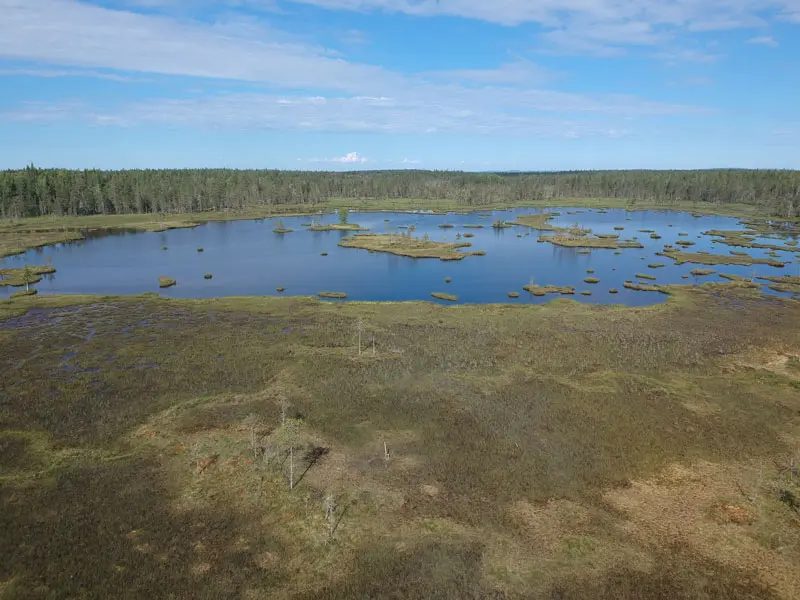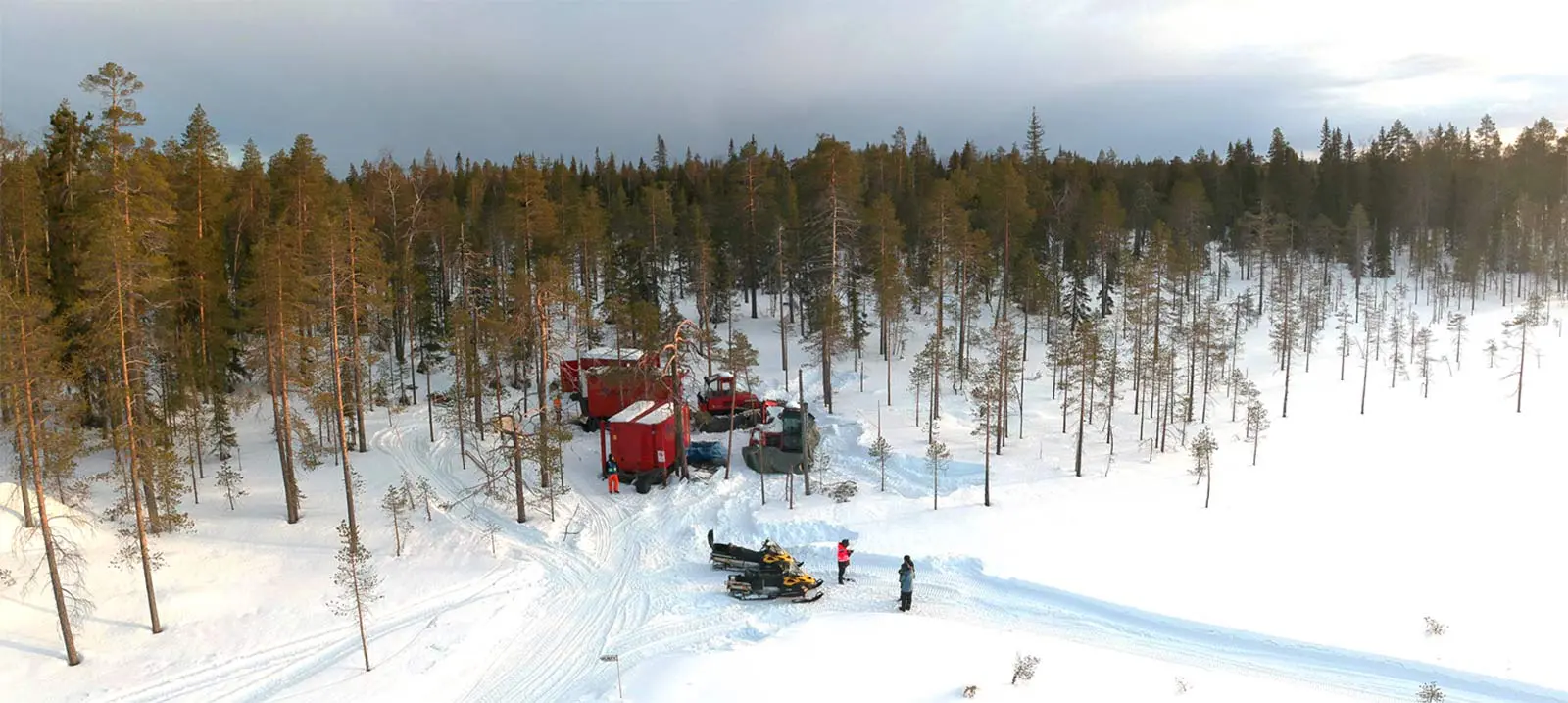A drill rig swallowed up by a lake or bog is a nightmare. That’s why winter is the only time that heavyweight drilling equipment is hauled across Finland’s marshy tundra – when it’s frozen solid.
Each day while geologists sip coffee to warm up, newly delivered diamond drill core thaws on their meeting room table. Outside, heated coils wrap pipes as they run under the snow to ensure water reaches the rigs without freezing.
Mawson Resources has shown that enduring Finland’s frigid north is worth it. When their exploration team struck Finland’s richest gold intersection in history – six metres at 617 grams – they followed it with a resource at their Rajapalot project even more valuable to both Finland and the European Union (EU): cobalt.
A lot of gold goes into banks, some is used in jewelry and electronics, but cobalt has become a vital resource for countries wanting to reach lower carbon emissions goals – so it’s in high demand.
Blue behind green energy
Most people envision silent electric vehicles driving by, giant wind turbines, or fields of solar panels when they hear “green energy.” Few know that behind each of those technologies is cobalt.
The blue element is used in everything from lithium ion batteries that power electric cars, to solar power energy storage, to components in electromagnets used to generate wind power.
Cobalt is so important to reducing carbon emissions that the European Union (EU) has deemed it a critical metal.
“It’s quite important on the EU’s scale to have sustainable and ethically sourced resources. And cobalt is one of them,” says Nick Cook, president of Mawson Resources.
“It’s probably only 10% to 20% of the in-situ value of the project. But in terms of an EU source for this critical metal, it’s very important. We would love to be a supplier for the low carbon economy – but it’s early days.”
Finland refines half of the world’s cobalt outside of China, making it a key part of their future economy.
This discovery is earning Mawson Resources a social license to operate on a national and international scale. The resource could empower Finland’s green economy, as well as helping the EU cement itself further in the battery supply chain.
Being a good explorer
Politics and trade aside, sustainability isn’t forgotten at site.

Mawson Resource’s project is set in Finland’s Lapland, a remote place known for its hinterland of trees, lakes, and swamps. That’s why it’s key in exploration that any impact made is minimised.
“You want to leave the environment as if you never visited,” says Nick.
“I became a geologist to be an outdoor scientist, and I’ve always liked the outdoors. So, I like the idea of treading softly.”
Finland’s environmental agencies ensure any companies operating in certain habitats must be very scientific in their approach and prove that minimal impact occurs. It’s strictly enforced.
“One season, we had more biologists than geologists on the ground,” explains Nick.
“Having baseline data, being a good explorer is all about the lowest footprint.”
Thus, although drilling in the summer marshland is impossible, no time is wasted. Nick’s team runs their target planning and environmental surveys during that season. Noting otter habitats, birds’ nests, and bear dens to avoid are as much of a consideration as the geology during project planning.
“It is critical that we plan our exploration programs with regard to the environment and our stakeholders,” Nick explains.
Minimum impact, maximum value
As well as not wanting to damage the environment, drilling programs are expensive. Mawson Resources used 3D geological modelling in Leapfrog Geo to make smart decisions about drilling targets and exploration.
Choices so smart that they have built an impressive gold-cobalt resource from the ground up. Nearly 15 kilometres of drill core in the maiden resource area required excellent data management alongside a 3D view of target locations.
“When you’ve got four drill rigs going, if you can’t manage the data you tend to lose control,” says Nick.
“Otherwise you don’t learn enough. And it’s very easy to waste money in drilling the wrong place.”
The company also uses MX Deposit, a cloud-based drill hole and sample data management platform, for an accessible place to log their data and analyse assay results in minutes, as well as export it to enhance their Leapfrog 3D geological models.
During the 2018 to 2019 winter, they completed an additional 15 km of diamond drilling to post the maiden resource, and their next program will be similar.
The 3D models have allowed them to show stakeholders, in a tangible way, continuity in their resource findings and give them confidence in its value.
Gone without a trace
Mawson Resources is doing a good job of offsetting their project’s impact, maybe too good.
“We have internal reuse of all the water and the drill cuttings get collected, and the drill cuttings get taken off site,” Nick explains.
Within two years, almost no evidence remains of their exploration activities.
“Sometimes it’s a bit annoying not being able to find a drill collar because it’s hidden in the swamp or in a bit of grass.”
As new drill data arrives with each campaign, who knows what more the team will discover in their frozen gold-cobalt belt.
“That’s always the thing in exploration: If results keep improving, you are usually on to a good thing. And, so far it’s improving all the time.”
